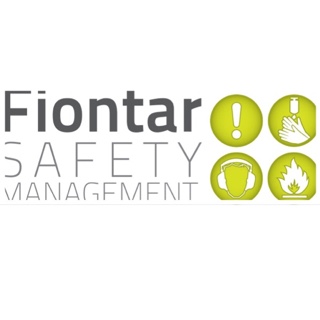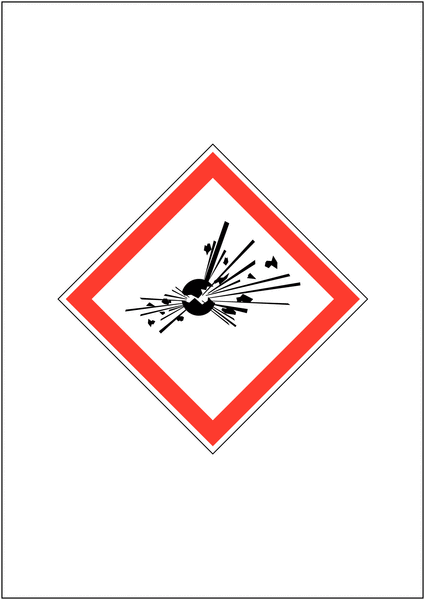Information
-
Audit Title
-
Document No.
-
Client / Site
-
Conducted on
-
Prepared by
-
Location
-
Personnel
A ) Site
-
A1) Sub-Location of the scaffold inspected.
-
A2) Description of the scaffold inspected.
-
A3) Is a temporary works design in place in accordance with BS 5975: 2008+A1:2011 and checked?
-
A4) Design drawing No:
-
A5) Are there any matters that could give rise to a risk to the health & safety of any person/s.
-
A6) Details of any actions taken in respect of "At Risk" matter identified above.
-
A7) Can the work be carried out safely? (If NO - enter why and name of person informed).
-
Enter why the work cannot be carried out safely.
-
Name of person informed.
B) Guidance Notes
-
The Work at Height Regulations 2005 (As amended 2007) - Reg 12, inspections.
-
The person carrying out an inspection shall complete the report before the end of the work period within which the inspection is completed.
-
The results of any inspection must be notified to the person operating the work (I.e, site manager) within 24 hours of completing the inspection.
-
A Scaffold is to be inspected - a) after assembly and before first use. b) at regular intervals not exceeding seven days. c) after any event likely to affect the stability of the scaffold. d) after any adverse weather.
-
During an inspection of the scaffold every tube, board, coupling, including every member and every joint in the whole structure must be inspected separately.
C) Sketch
-
During an inspection it is preferable to draw a grid of the scaffold allocating letters and numbers to standards and ledgers so the position of any defects can be identified. Below you can sketch each elevation as required.
-
C1) North Elevation
-
C1) South Elevation
-
C3) West Elevation
-
C4) East Elevation
-
You can add photos of the elevations here.
1. Foundations
-
1.1 Are the foundations firm and level?
-
1.2 Does each standard have a timber or composite sole plate?
-
1.3 Are timber sole plates of the correct dimensions and in good condition? (450mm long on firm ground or 765mm on soft ground. TG20:08)
-
1.4 Do all standards have a steel base plate or base jack 150 x 150 x 5mm minimum thickness in accordance with BS EN 74-32007?
-
1.5 Are foundations protected from any groundworks?
-
1.6 Is the base of the scaffold protected from site plant and traffic?
2. Geometry
-
2.1 Are standards vertical?
-
2.2 Are ledgers horizontal?
-
2.3 Are the transoms horizontal?
-
2.4 Are joints in the standards staggered and not in the same bay?
-
2.5 Are the joins in the ledgers staggered and not in the same bay?
-
2.6 Are the joints in the ledgers no more that one third into the bay?
-
2.7 Are the transoms correctly spaced? (max 1200mm)
3. Working Platforms
-
3.1 Is the overhang a minimum of 50mm or maximum 150mm for 38mm boards?
-
3.2 Are splits in boards less than 300mm? TG7:07
-
3.3 Are the boards to BS 2482:2009, sound and in good condition?
-
3.4 Do total knots around the board measure less than 150mm in 100mm strip in accordance with BS 2482:2009?
-
3.5 Are the size of the knots on the face of the boards less than 75mm?
-
3.6 Are the size of the knots on the edge of the boards less than 28mm?
-
3.7 If boards are lapped over others, are they safe from tripping hazards?
-
3.8 Are the boards secure?
-
3.9 Have boards of less than 2.13m been secured?
-
3.10 Are all boards banded at both ends?
-
3.11 Are toe board secure with a minimum of 2 clamps?
-
3.12 Have toe boards a side resistance of 15 kg's in accordance with TG:20?
-
3.13 Are gaps in platforms 25mm or less (50mm where standards force through)?
-
3.14 Are puncheons supported correctly from the ledgers or beams?
-
3.15 Are deadmen installed correctly, on two load bearing fittings?
4. Bracing
-
4.1 Is the ledger bracing fitted with load bearing couplers on alternative pairs of standards for the full height of the scaffold?
-
4.2 Is the longitudinal or facade bracing fitted to every lift with swivels?
-
4.3 Is the longitudinal or facade brace fitted along the face of the scaffold at a maximum of six bays? TG20:13
-
4.4 Are the ends of the longitudinal bracing fixed with double or swivel couplings to within 300mm of the node point?
-
4.5 Has plan bracing been installed in accordance with the design?
5. Tubes and Fittings
-
5.1 Are all the scaffold tubes to BS EN 39 and in good condition?
-
5.2 Are all of the fitting in good condition?
-
5.3 Have the correct fittings been used in the right location?
-
5.4 Have the correct joint pins or sleeve couplers been used?
-
5.5 Are the fitting to BS EN 74 and are they at the correct torque?
-
5.6 Are supplementary couplers fitted where required?
-
5.7 Are check couplers fitted where required?
-
5.8 Has the "rule of thumb" been applied with tubes through couplers by at lease 25mm?
-
5.9 Have rakers been installed correctly?
6. Access and Egress
-
6.1 Is access provided to the full height of the scaffold?
-
6.2 Are the ladders angles 75 degrees max?
-
6.3 Is the top of ladders tied securely at both stiles?
-
6.4 Are ladders on a firm and stable base?
-
6.5 Do ladders project at least 1.05m above each platform?
-
6.6 Where ladders don't extend above the platform are suitable and sufficient hand hold points provided?
-
6.7 Are ladder openings minimum 450 x 600 long? (BS EN 12811-1)
-
6.8 If ladders are inside the scaffold, are trap doors installed? (WAHR Reg 6(4)(a)b. )
-
6.9 Are ladders in good overall condition?
-
6.10 Are any rubber feet on the ladders in good condition?
-
6.11 Are self closing ladder access gates fitted? (WAHR Reg 8(a) Part 5)
7. Loading
-
7.1 Is the scaffolding correct for its' intended use?
-
7.2 Are the loads on the scaffold evenly distributed?
-
7.3 Are materials securely stacked?
-
7.4 Are the standards spaced correctly for the loadings?
-
7.5 Are loading bay safety gates installed?
-
7.6 Are safety gates installed in accordance with manufactures instructions?
8. Ties
-
8.1 Have sufficient ties been used in accordance with TG20:13 - 5.2 (Every other lift and every other pair of standards) every 4m?
-
8.2 Have the ties been fixed with right angled load bearing couplers?
-
8.3 Have drilled anchors been tested in line with TG4:11 and pull test certificates provided.
-
8.4 Have tested ties been tagged?
-
8.5 Have the ties been fixed to both inner and outer standards or ledgers?
9. Guard Rails and Toe Boards
-
9.1 Are all the guard rails and intermediate guard rails fixed to the inside of the standards with double couplings?
-
9.2 Are guard rails a minimum 950mm above working platforms?
-
9.3 Is the gap between guard rails 470mm or less?
-
9.5 Where required, are brick guards fitted?
-
9.6 Have the toe boards been secured to the inside of the standards?
-
9.7 Are the toe boards connected with two fittings?
10. Work area around the scaffold
-
10.1 Is the work are tidy?
-
10.2 Are all materials stored in their proper locations?
-
10.3 Are working areas free of trip hazards?
11. Documentation
-
11.1 Is there a first use inspection and hand over certificate in place?
-
11.2 Is max load capacity of this type of scaffold communicated to all employees?
-
11.3 Where required have all necessary permits been obtained?
-
11.4 Is there a "Tagging" system in place?
12. Sign off
-
Note - an employer receiving a report or copy report under the Work at Height Regulations must keep the copy at the site where the inspection was carried out until the construction work is complete and ; thereafter an office of his for at lease three months.
-
12.1 Comments
-
12.2 Name of person completing this report.
-
Date and time inspection completed.
-
12.3 Name of the site person receiving this report.
-
I confirm the contents of this report have been discussed with myself and I am aware of any defects highlighted in the body of this report.
-
Date and time report Received.
13. Closure
-
I confirm all actions highlight in this report have been actioned on:
-
Name of the person closing this report.













